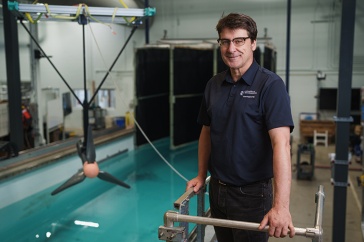
Is nitrogen the new carbon? It fertilizes crops that feed the world, but reactive nitrogen is also a pollutant that contributes to a cascade of environmental and human health problems such as smog, coastal “dead zones” and climate change. And while reactive nitrogen occurs naturally, human creation of the element has increased six-fold since 1940. To understand how our consumption of food and energy releases nitrogen into the environment, Alley Leach, a Ph.D. student in the natural resources and Earth systems science program, is applying a nitrogen “footprint” model she developed while at the University of Virginia to calculate UNH’s institution-wide nitrogen impact. Part of the first cohort of universities using this tool, UNH is also integrating the nitrogen footprint into the Campus Carbon Calculator, a tool developed by the UNH Sustainability Institute and used by thousands of institutions around the world. “Most carbon footprint reduction strategies will also reduce the nitrogen footprint, which is a win-win for sustainability,” says Leach, who studies with University Professor John Aber.

Reduce your nitrogen footprint
Eat differently.
Food production accounts for 75 percent of the average person’s nitrogen footprint. To reduce that, choose foods produced on more sustainable farms. And step away from the steak: A diet heavy in protein — animal protein in particular — is nitrogen-intensive, and the production of beef releases more nitrogen into the environment than other animal protein, like chicken.
Eat it all!
Cutting down on food waste reduces the amount of food that needs to be produced. In the U.S., about 30 percent of food is wasted.
Power down.
Because burning fossil fuels is a major source of reactive nitrogen, reducing energy consumption will reduce your nitrogen — as well as your carbon — footprint.
Originally published in UNH Magazine Spring 2016 Issue
-
Written By:
Beth Potier | UNH Marketing | beth.potier@unh.edu | 2-1566



















































